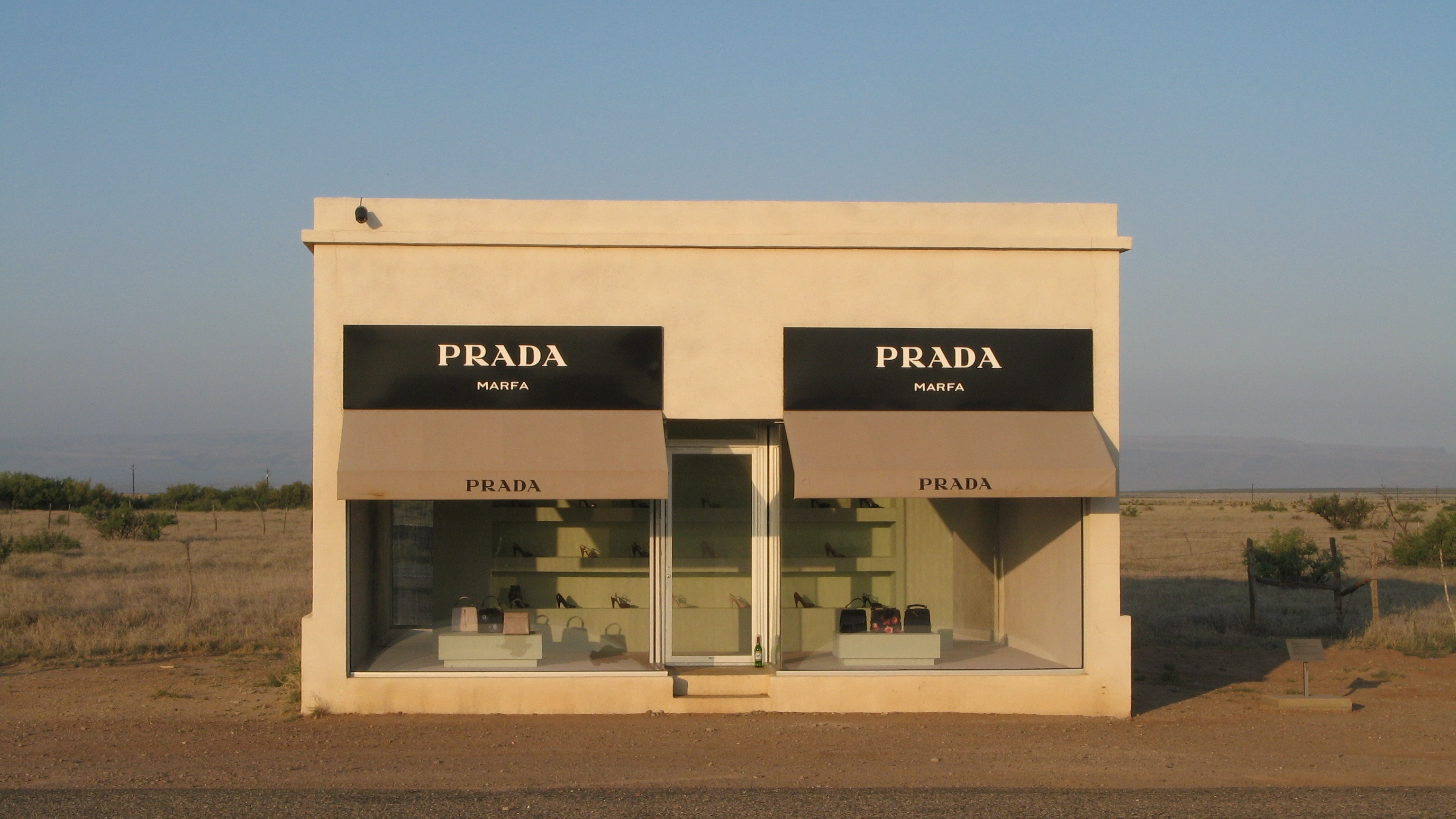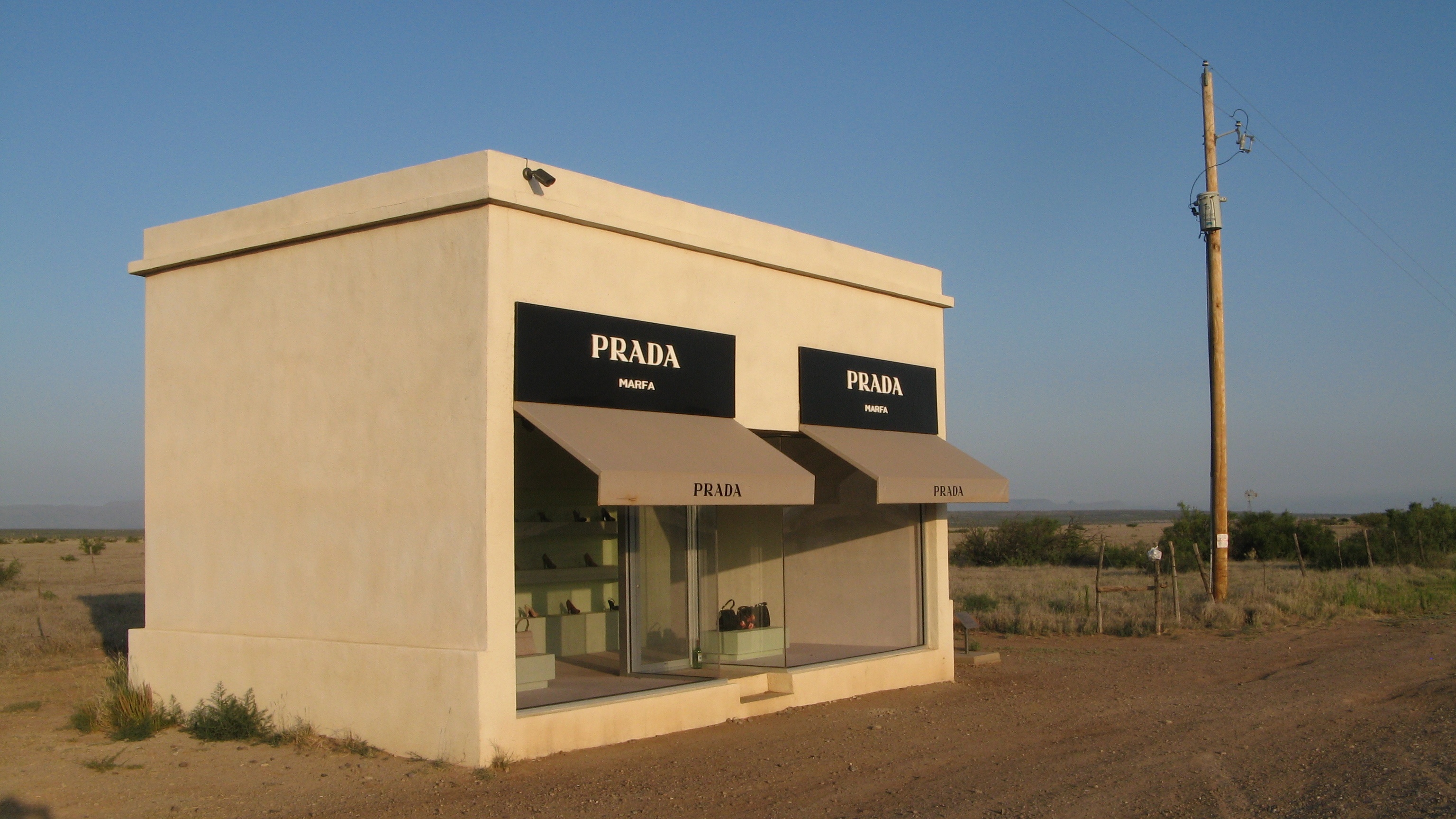
Marfa, in the high plains of the Chihuahua desert, is hardly the most likely of art-world destinations. But here, nestled in the outskirts of this West Texan town, is an artwork with a cult status that goes far beyond its humble surroundings: Prada Marfa. Designed as a pop-architectural intervention amidst the desolate landscape, with just cacti and arid scrubs for company, it would be fair to say that the store, with its high-fashion affiliation, sticks out like a sore thumb. It is as if an alien ship has beamed into the desert—an assumption somewhat in keeping with the superstitions often associated with the American Southwest, where conspiracy theories and alternative beliefs are rife.
At first glance, Prada Marfa is a fully-fledged store, complete with handbags and high-heels on display. Look closer, though, and it quickly shifts from serious fashion credentials to art-world absurdity. For one thing, the door is permanently sealed shut, effectively locking the store’s stock permanently inside. Enjoy window shopping? Prada Marfa takes the concept to its furthest extreme. There is no retail therapy to be had at this store. Instead, the building itself acts as the artwork, constructed from a biodegradable adobe-like substance in keeping with its surroundings. Over time, the walls will degrade, slowly melting back into the earth.
The project is the brainchild of artist duo Elmgreen & Dragset, who installed the store back in 2005. A commentary on the collusion of the worlds of art, fashion and luxury, bound up as they are with money and aspiration, Prada Marfa offers a surrealist take on a contemporary consumer culture that continuously wants more, more, and ever more. Almost fifteen years on, in the age of social media, that never-satisfied desire is more acute than ever. It is hardly surprising that Prada Marfa itself has become a mecca for art selfies—even Beyonce has visited.

“A commentary on the collusion of the worlds of art, fashion and luxury, Prada Marfa offers a surrealist take on a contemporary consumer culture”
As a solitary construction in the desert, the building recalls the monolithic structures of Donald Judd, who first put Marfa on the art-world map back in the late 1970s. The minimalist pioneer moved to the then-unknown town to escape the fast pace of New York, and lived there until his death in 1994. With the help of the DIA Foundation, Judd acquired an entire Army base, spanning more than 400 acres, which he filled with art including light installations by Dan Flavin and his own signature boxes.
Prada Marfa takes up considerably less space in the desert, located on Route 90 just one and a half miles outside of town. Isolated by the side of the road, it is susceptible to vandalism and theft, with the high-value items held inside. Elmgreen & Dragset reportedly collaborated with Miuccia Prada herself for the stock, who handpicked the merchandise for display, and there have been a number of attempts to steal the goods.
The installation will continue to disintegrate in years to come, moving further from the pristine origins of its designer namesake. Over time, Prada Marfa will edge closer and closer to its conceptual endgame, where fantasy and reality collide in the strange hinterland of the American wilderness.





